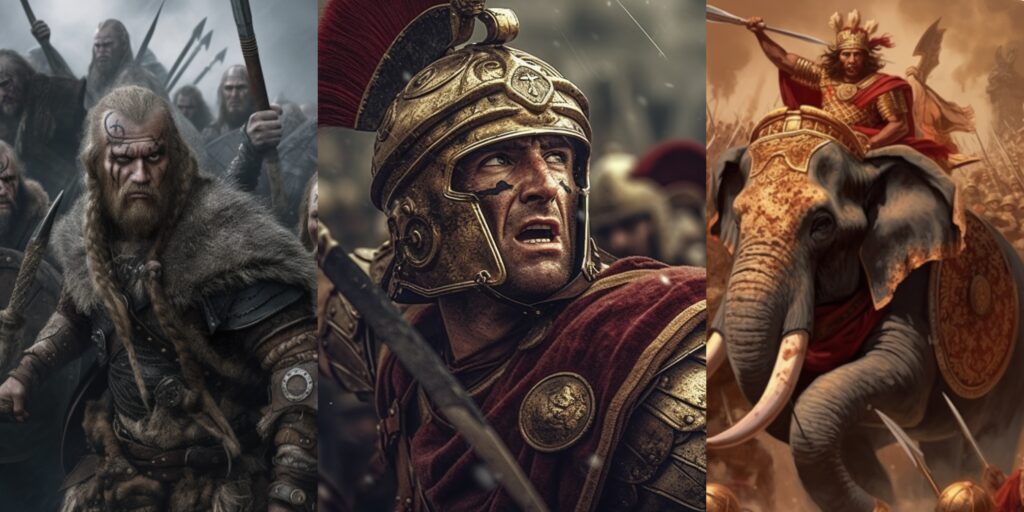This content discusses the key military tactics of ancient Greece. It highlights the phalanx formation, where heavily-armored infantry soldiers stood shoulder to shoulder in a tightly packed formation. The importance of hoplite armor is also emphasized, as well as the tactics employed by the phalanx, such as the “push of shields” maneuver and the “oblique order.” The content also mentions the use of cavalry and light infantry support, as well as the Greeks’ mastery of naval warfare with the trireme ship. The conclusion emphasizes the continued study and admiration of these tactics and their influence on future warfare strategies.
Battlefield Brilliance: Analyzing the Key Military Tactics of Ancient Greece
Introduction
Ancient Greece is often referred to as the birthplace of Western civilization due to its tremendous contributions in various fields, including philosophy, art, literature, and democracy. However, it is also noteworthy for its military brilliance and the development of revolutionary tactics that influenced warfare for centuries to come. This article will delve into some of the most significant military tactics employed by the ancient Greeks.
The Phalanx Formation
One of the most notable military tactics associated with ancient Greece is the phalanx formation. The phalanx was a formation of heavily-armored infantry soldiers known as hoplites, who stood shoulder to shoulder in a tightly packed formation. The shields of the soldiers overlapped, creating a solid wall that was almost impenetrable. The primary weapon used by the hoplites was the spear, which extended over the shields of the front line to deter enemy advances.
The Importance of Hoplite Armor
The success of the phalanx formation relied heavily on the effectiveness of hoplite armor. Typically, hoplites wore bronze helmets, cuirasses, and greaves, providing them with significant protection against enemy attacks. The hoplites’ use of full-body armor was a departure from the lighter armor worn by other ancient armies, giving them a distinct advantage on the battlefield.
Phalanx Tactics
The phalanx formation was a formidable force due to the tactics employed by the ancient Greeks. One such tactic was the “push of shields” maneuver, where the hoplites would move forward as a unit, exerting their collective strength against the enemy. The soldiers used their shields to create a continuous wall, making it nearly impossible for the opposing force to break through.
Another tactic utilized by the phalanx was the “oblique order,” where the formation would be shifted on an angle to bring maximum force against a specific point in the enemy line. This allowed the Greeks to exploit weak spots in the opposing formation and secure a breakthrough.
Cavalry and Light Infantry Support
While the phalanx was the backbone of Greek military tactics, they also recognized the importance of a well-rounded army. Cavalry and light infantry were often employed to support the hoplites on the battlefield. The cavalry units provided swift mobility and were ideal for flanking maneuvers or engaging enemy cavalry, while the light infantry served as skirmishers, harassing the enemy and disrupting their formations.
Naval Warfare: Triremes
Ancient Greece’s military prowess was not limited to land battles alone. The Greeks were renowned for their mastery of naval warfare, with their most iconic naval vessel being the trireme. Triremes were long, narrow warships equipped with three banks of oars, allowing for exceptional speed and maneuverability. The ramming technique was a typical naval tactic employed by the Greeks, where they would attempt to sink enemy ships by ramming into their sides.
Conclusion
The military tactics employed by ancient Greece continue to be studied and admired to this day. The phalanx formation and its various maneuvers showcased the Greeks’ ability to work as a cohesive unit and exploit weaknesses in the opposition. Moreover, their understanding of combined arms warfare, including the effective use of cavalry, light infantry, and naval strength, further solidified their military brilliance. These tactics not only shaped the warfare of the ancient world but also laid the foundation for future military strategies and tactics.
